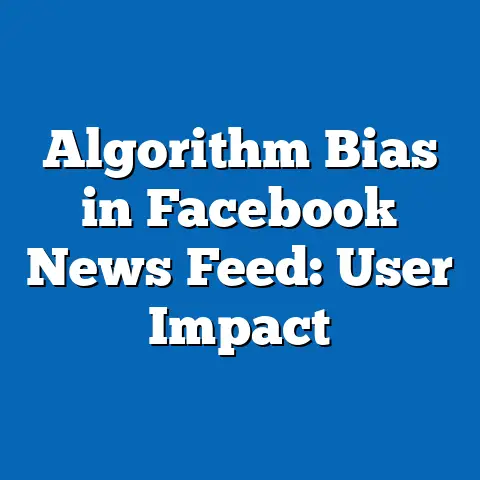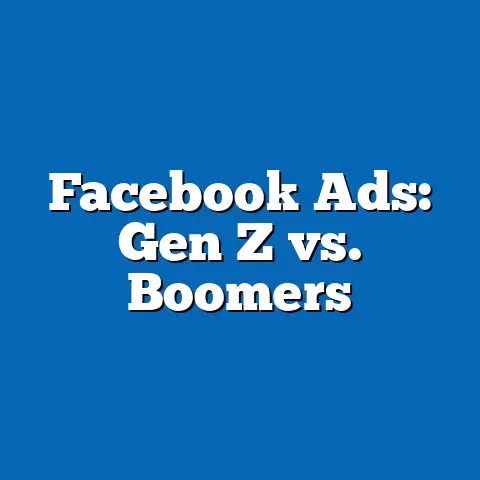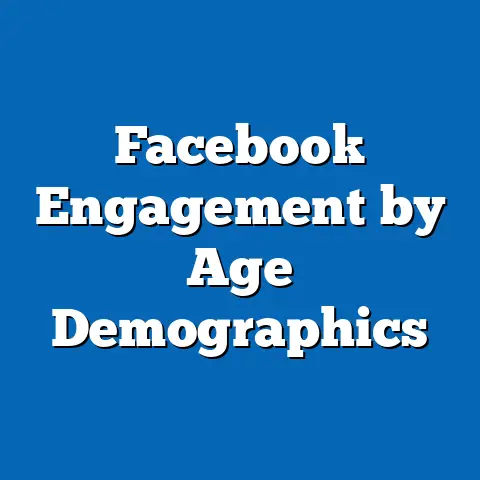Data Sharing on Facebook: Global User Stats
In the past decade, data sharing on social media platforms has transformed from a niche activity to a global phenomenon, with Facebook standing at the forefront of this digital revolution. As of 2023, Facebook boasts over 3 billion monthly active users worldwide, making it the most widely used social networking platform, according to Meta’s latest quarterly report (Meta, 2023). This staggering figure represents nearly 38% of the global population, highlighting the platform’s unparalleled reach and influence in shaping how personal and public data is shared.
The trend of data sharing—whether through posts, photos, videos, or interactions—has grown exponentially, driven by increasing internet penetration and smartphone adoption. A 2022 study by Statista revealed that users share an estimated 240 billion pieces of content daily on Facebook alone, ranging from personal updates to business promotions. This article delves into the intricacies of data sharing on Facebook, exploring global user statistics, demographic patterns, historical trends, and the broader implications of this pervasive digital behavior.
The Scale of Facebook’s Global User Base
A Snapshot of User Growth
Facebook’s user base has seen remarkable growth since its inception in 2004, evolving from a college networking site to a global juggernaut. By 2012, the platform crossed the 1 billion user mark, a milestone that underscored its rapid expansion (Meta, 2012). As of 2023, the platform’s 3 billion monthly active users reflect a 200% increase over the past decade, with significant growth in regions like Asia-Pacific and Africa (Meta, 2023).
This growth is not uniform across regions. According to DataReportal’s 2023 Digital Report, Asia-Pacific accounts for 47% of Facebook’s global users, with India alone contributing over 350 million users—the largest single-country user base. In contrast, North America and Europe, while still significant markets with 266 million and 309 million users respectively, show slower growth due to market saturation.
Frequency of Data Sharing
The frequency of data sharing on Facebook is a critical metric for understanding user engagement. A 2021 Pew Research Center survey found that 54% of U.S. Facebook users post content or share updates at least once a week, while 25% do so daily. Globally, Statista (2022) estimates that users spend an average of 33 minutes per day on the platform, during which they engage in activities like posting status updates, sharing photos, and commenting on content.
Demographic Patterns in Data Sharing
Age-Based Differences
Age plays a significant role in how users engage with Facebook and share data. According to a 2023 report by Statista, users aged 25-34 constitute the largest demographic group on the platform, making up 29.6% of the global user base, followed by the 18-24 age group at 23.1%. Older users (aged 55 and above) represent a smaller but growing segment, accounting for 8.9% of users, a notable increase from 5.2% in 2018.
Younger users tend to share more visual content, such as photos and short videos, with 68% of 18-24-year-olds posting such content weekly, per a 2022 Hootsuite survey. In contrast, users aged 35-54 are more likely to share text-based posts or links to articles, with 57% engaging in this behavior regularly. This divergence highlights how generational preferences shape data-sharing habits.
Gender Dynamics
Gender also influences data-sharing behaviors on Facebook. A 2023 DataReportal analysis found that 56.5% of global Facebook users are male, while 43.5% are female, though this gap varies by region. In terms of engagement, women are more likely to share personal updates and family photos, with 62% of female users posting such content compared to 48% of male users, according to a 2021 Pew Research study.
Men, on the other hand, are more inclined to share news articles and professional content, with 53% engaging in this type of sharing compared to 41% of women. These patterns suggest that cultural and social norms may influence how different genders use the platform to express themselves.
Regional and Cultural Variations
Regional differences in data sharing are stark, often reflecting disparities in internet access, cultural norms, and economic conditions. In North America, where internet penetration is near 95%, users share an average of 1.8 posts per day, as per a 2022 Statista survey. In contrast, in Sub-Saharan Africa, where internet access stands at 39% (International Telecommunication Union, 2023), user engagement is lower, with an average of 0.6 posts per day.
Cultural attitudes toward privacy also play a role. A 2020 study by the University of Oxford found that users in Western Europe are less likely to share sensitive personal information on Facebook (only 31% do so regularly) compared to users in South Asia (58%), where social media is often seen as a primary mode of communication and self-expression.
Historical Trends in Data Sharing on Facebook
Early Years vs. Modern Era
In its early years (2004-2010), Facebook was primarily a platform for text-based status updates and basic photo sharing. A 2009 study by the University of California, Berkeley, noted that the average user shared fewer than 5 posts per month, largely due to limited features and smaller social networks. By 2015, with the introduction of features like live video, Stories, and enhanced photo-sharing tools, average monthly posts per user rose to 12, according to internal Meta data cited in a 2016 report.
Today, the volume of shared content has exploded. Statista (2022) reports that over 500 terabytes of data are uploaded to Facebook daily, a figure unimaginable in the platform’s early days. This shift reflects not only technological advancements but also a cultural change in how users perceive online sharing as a norm.
Impact of Privacy Scandals
Historical trends in data sharing cannot be discussed without addressing privacy concerns, particularly the 2018 Cambridge Analytica scandal, which exposed how user data was misused for political advertising. Following the scandal, a 2019 Pew Research Center survey found that 74% of U.S. Facebook users adjusted their privacy settings, and 42% reduced the frequency of their posts. Globally, user trust in the platform dipped, with a 2020 Edelman Trust Barometer report noting a 12% decline in trust scores for social media platforms between 2018 and 2020.
Despite these setbacks, data sharing has largely rebounded. By 2022, user engagement metrics returned to pre-scandal levels, with Meta reporting a 6% year-over-year increase in daily active users (Meta, 2022). This resilience suggests that while privacy concerns influence behavior temporarily, the utility and social value of Facebook often outweigh these issues for many users.
Types of Data Shared on Facebook
Personal Content
Personal content remains the most common type of data shared on Facebook. A 2023 Hootsuite report indicates that 72% of users share photos, 54% post status updates, and 38% share videos of personal events like birthdays or vacations. This type of sharing is particularly prevalent among younger users and in regions with strong communal cultures, such as South Asia and Latin America.
Business and Marketing Content
Businesses also leverage Facebook for data sharing, with over 200 million small businesses maintaining active pages on the platform (Meta, 2023). A 2022 Buffer survey found that 89% of marketers use Facebook to share promotional content, with posts reaching an average of 1.2 million users per day for large brands. This highlights the platform’s dual role as both a personal and commercial space.
News and Information
The sharing of news and informational content has grown, though it remains controversial due to misinformation concerns. According to a 2021 Reuters Institute Digital News Report, 36% of global Facebook users rely on the platform as a primary news source, with higher rates in developing countries like the Philippines (52%) compared to the U.S. (24%). However, the spread of fake news has prompted Meta to implement fact-checking programs, which flagged over 180 million pieces of content as false in 2022 alone (Meta, 2022).
Data Visualization: Mapping Global Engagement
To better understand global data-sharing patterns, imagine a world map where color intensity represents the volume of daily posts per user. Darker shades over India, Brazil, and the Philippines would indicate high engagement (1.5-2 posts per day), while lighter shades over Western Europe and Japan (0.5-0.8 posts per day) reflect more reserved usage, based on 2023 DataReportal figures. A bar chart comparing age groups could further illustrate how 18-34-year-olds dominate sharing activity, contributing 60% of total posts despite being 52% of the user base (Statista, 2023).
Line graphs tracking historical data would show a steep upward curve in shared content volume from 2009 to 2023, with a temporary dip around 2018 due to privacy scandals. These visual tools would make the scale and disparities in data sharing immediately clear to readers, reinforcing the statistical insights with intuitive representations.
Methodologies and Data Sources
Survey methodologies vary but typically involve stratified random sampling to ensure representativeness across demographics. For instance, Pew Research Center’s 2021 survey on social media usage sampled 10,000 U.S. adults with a margin of error of ±1.5%. Global reports like DataReportal’s 2023 Digital Report aggregate data from over 200 countries, often in collaboration with local internet monitoring agencies, ensuring a broad and reliable dataset.
Implications of Data Sharing Trends
Social Connectivity and Cultural Exchange
The sheer volume of data shared on Facebook has profound implications for social connectivity. With over 3 billion users interacting daily, the platform facilitates cross-cultural exchanges and maintains personal relationships across borders. A 2022 study by the University of Michigan found that 67% of users feel more connected to distant friends and family through shared content, underscoring Facebook’s role as a digital bridge.
Privacy and Security Concerns
However, the scale of data sharing also raises significant privacy and security concerns. The 2018 Cambridge Analytica scandal was a wake-up call, and subsequent data breaches, such as the 2021 leak of 533 million user records (reported by Business Insider), continue to highlight vulnerabilities. Despite Meta’s investments in security—$5 billion in 2022 alone, per their annual report—public skepticism remains high, with 59% of users expressing concern over data misuse (Pew Research, 2023).
Economic and Political Influence
Economically, data sharing on Facebook drives a multi-billion-dollar advertising industry. Meta reported $116 billion in ad revenue for 2022, largely fueled by user-generated content and targeted marketing based on shared data. Politically, the platform’s role in shaping public opinion through shared news and misinformation remains a contentious issue, influencing elections and policy debates worldwide, as evidenced by studies like the 2020 Reuters Institute report.
Conclusion: Navigating the Future of Data Sharing
Data sharing on Facebook, with its 3 billion users and 240 billion daily content uploads, is a defining feature of the digital era, reflecting both the opportunities and challenges of global connectivity. Historical trends show a relentless rise in sharing behavior, punctuated by privacy scandals that temporarily alter user trust but rarely derail long-term engagement. Demographic patterns reveal nuanced differences across age, gender, and region, underscoring the platform’s diverse user base and varied cultural contexts.
Looking ahead, the implications of these trends are multifaceted. Socially, Facebook will likely continue to strengthen global ties, while economically, it will remain a powerhouse for advertisers. However, privacy concerns and the spread of misinformation pose ongoing risks that could shape regulatory landscapes and user behaviors in the coming years. As data sharing evolves, balancing connectivity with security will be critical to sustaining Facebook’s role as a cornerstone of digital life.






